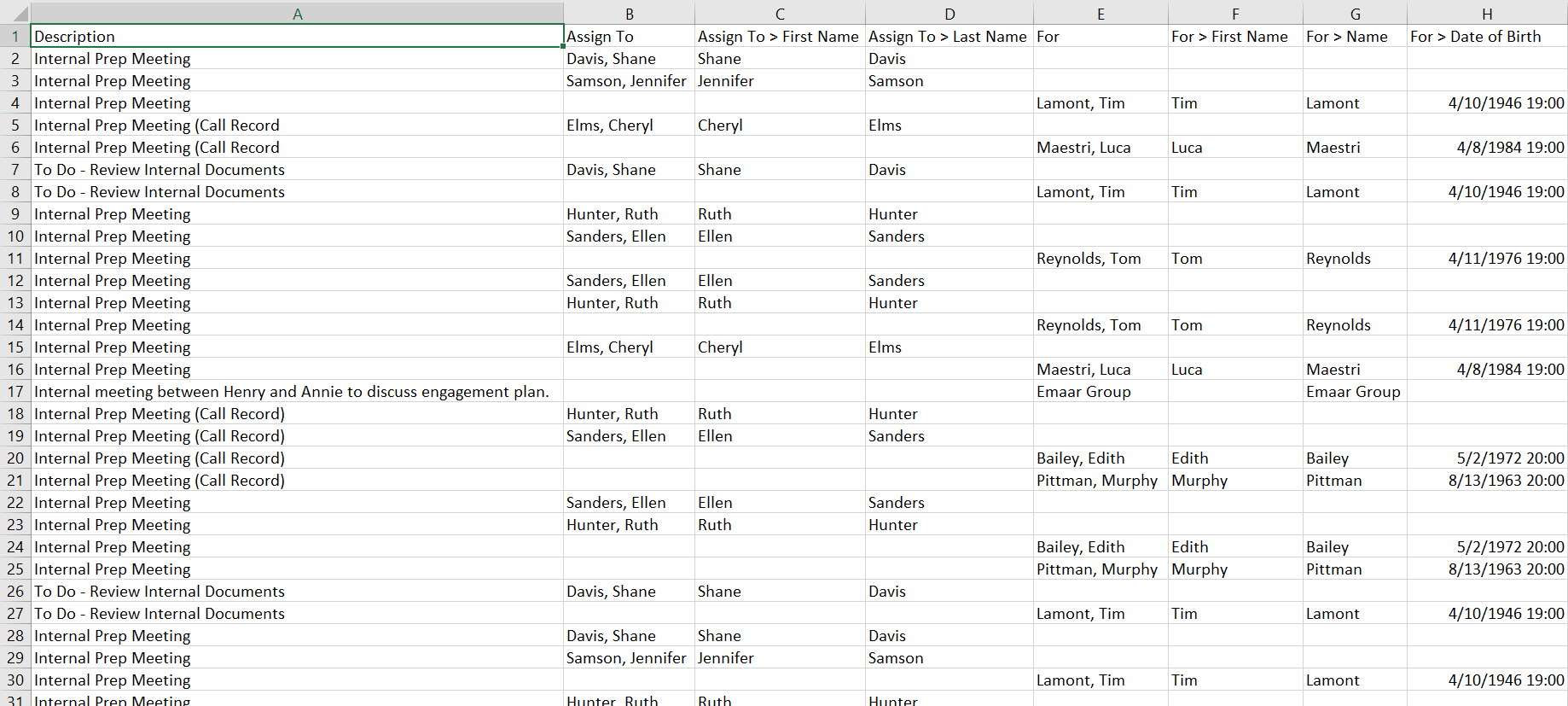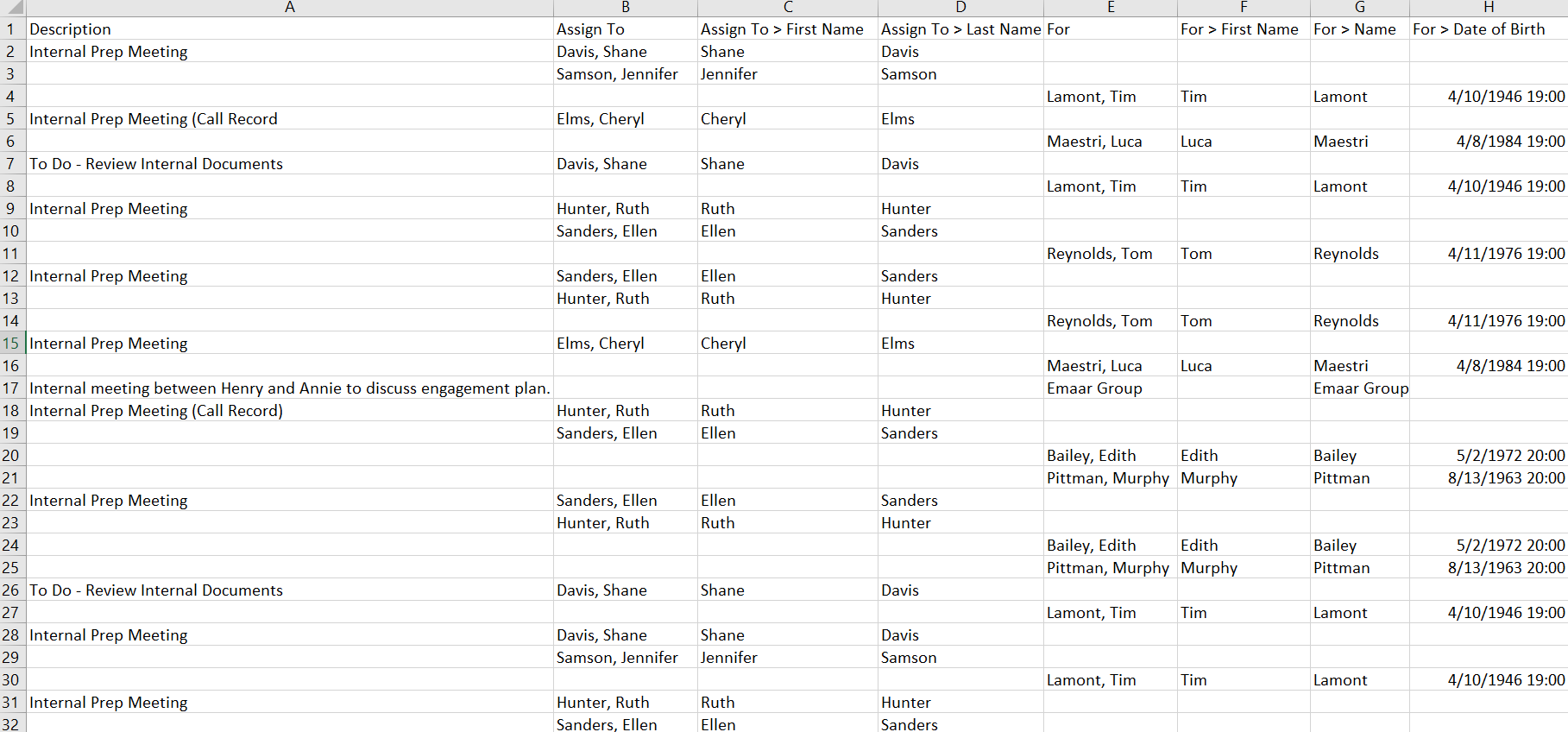Exporting reports
You can export report data to multiple formats, including PDF, CSV, Excel, and PNG formats. If you are a report administrator, you can also export a report's definition in JSON format to share it with specific users.
You must run a report before you can export the report. Exporting the report does not refresh the data in the report. The exported report uses the data from the last time you clicked the Update Report button 
Configuring CSV export settings
Before you export a report to a CSV file, you can specify how collections fields will be exported in the Settings tab in the Report Viewer on the Export card. You can choose one of the following options:
Expand to multiple rows and repeat common fields - This option expands collections in a CSV export to multiple rows, while the common attributes are duplicated for each row.
Expand to multiple rows, do not repeat common fields - This option expands collections in a CSV export to multiple rows, while the common attributes are included on the first row only, without being duplicated.
Collapse to a single row using a delimiter - The option flattens associated attribute values for a collection into the same row in the exported CSV files using a semicolon delimiter.
The option for collapsing attribute values for a collection to a single row using a delimiter is not available when you have configured your report to use nested collections.
When you have selected a collection field in the Report Builder, the default attribute for the collection is always exported, even when you do not select the default attribute in the Report Builder. For example, for the Assign To collection, the default attribute is Full Name.
The following example shows the exported CSV file for an activities report that contains collections (for example, Assign To and For) when the Expand to multiple rows and repeat common fields has been selected. The Description column contains fields that are repeated for the same activities.

Expand to multiple rows and repeat columns option example
The following example shows the exported CSV file for the same report when the Expand to multiple rows, do not repeat common fields option has been selected. The Description column now displays multiple rows for each activity, and collection attribute values display in single rows.

Expand to multiple rows, do not repeat common fields option example
The following example shows the exported CSV file for the same report when the Collapse to a single row using a delimiter option has been selected. There are fewer rows in this example because collection attribute values have been flattened into single rows (one row for each activity), and are delimited by semicolons.

Collapse to a single row using a delimiter option example
The default maximum limit for an exported CSV file is 10,000 rows. Your system administrator may configure the maximum number of rows for CSV exports.
Exporting a report
To export a report, you can either:
Hover over the required report in the reports data table, click the More Actions button

, select Export Report, and select one of the following export menu options:
Full Report (PDF)
A full report includes the data from the Details, Summary, and Visualization tabs.Detail (CSV)
Summary (Excel)
Visualization (PNG)
Definition (JSON) - This option can only be used by report administrators.
Open the required report in view mode (see Viewing existing reports) and complete the following procedure:
Perform one of the following procedures:
Select the Details, Summary, or Visualization tabs and perform an export:
To export the raw data, select the Details tab and click Export To CSV.
As of NexJ CRM 9.6, you can include multiple collections as part of your CSV export. For example, you can include attributes from both the Assign To and For collections for an activity-based report.
To export the report summary, select the Summary tab and click Export to Excel.
To export the report visualization, select the Visualization tab and click Export to PNG.
Click the Export Report button

and select one of the following export menu options:
Full Report (PDF)
Detail (CSV)
Summary (Excel)
Visualization (PNG)
Definition (JSON) - This option can only be used by report administrators.
For Detail (CSV), when a report has a collection and is exported to a CSV file, the fields of the report are repeated in columns for each related collection value listed unless your system administrator has configured your reports to not repeat the fields.
Specify the location for the exported file.
The file is saved to the specified location. The default file name is in the following format:
<reportName>_<typeOfExport>
(for example,
<reportName>_summary.xlsx
). The column order in the CSV and XLS files is the same as when viewing the report.
